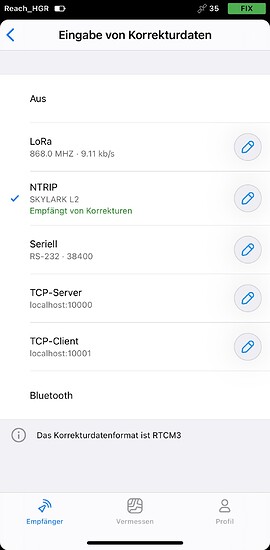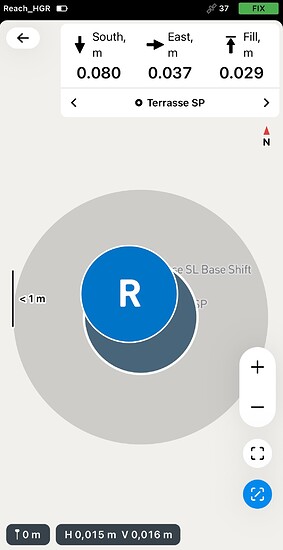Dear all,
Out of curiosity, I subscribed to Skylark correction services for one month.
Normally I use SAPOS (a service provided by the German state); it provides 1cm accuracy horizontally and 2cm vertically.
Skylark is a different cup of tea, I know, but ReachView showed accuracies of 2cm horizontally and 4cm vertically. Great!
(Will try CubeA5 and FieldGenius later.)
Now I am trying to figure out how to get ETRS89 (SAPOS) and ITRF2014 (Skylark) coordinates lined up.
*Edit
One German federal state (Saarland) even uses Bessel and GK.
*Edit
The difference in position is always around 50cm.
Is it possible to measure a point with bases sending corrections in different reference systems and obtain (almost) equal coordinates? 
If yes, I would be happy to know how. 
Kind Regards
Buddy
Hi @buddybuxbaum,
Sorry for the silence here!
Skylark is a different cup of tea, I know, but ReachView showed accuracies of 2cm horizontally and 4cm vertically. Great!
Sounds nice! Thanks for sharing your results 
Is it possible to measure a point with bases sending corrections in different reference systems and obtain (almost) equal coordinates?
Each CS you can work with in ReachView 3 has one corresponding base datum. If you use another base datum, it’ll cause a shift in the rover’s coordinates. So, you’ll need some additional software to get all the coordinates in the same CS. A GIS app or an online converter can help with it.
@buddybuxbaum,
Just thought you also can try out the Base shift workaround described in this thread. I haven’t tried it myself, but I think it may help in your case!
1 Like
Kseniia, that’s a great idea! 
I’m going to give it a try and report later.
Many thanks.
Buddy
1 Like
Buddy,
Would be glad to know if it suits you!
Hello Kseniia,
Brief update:
First I measured a random point on my terrace with SAPOS. All sigma values were 1cm. I only took 150 samples, then switched over to SKYLARK Europe L1/L2.
All sigma values were 1cm as well, which I found fascinating. The rover hadn’t moved and I took 150 samples again. After that I calculated the base shift and re-measured the point. Please have a look at the pictures attached to assess the improvement.
Regards
Buddy
Buddy,
Looks much better after the base shift  Thanks for sharing!
Thanks for sharing!
You’re right, Kseniia.
Shifting the base is an acceptable approach to solving the problem.
Nevertheless, I canceled the subscription, because for the time being the service needs too much time to get a fixed solution and the consistency of positions (test-retest reliability) doesn’t meet our requirements.
However, thumbs up for Skylark.
Let’s close the thread. 
Regards
Buddy
1 Like
![]()
![]()








